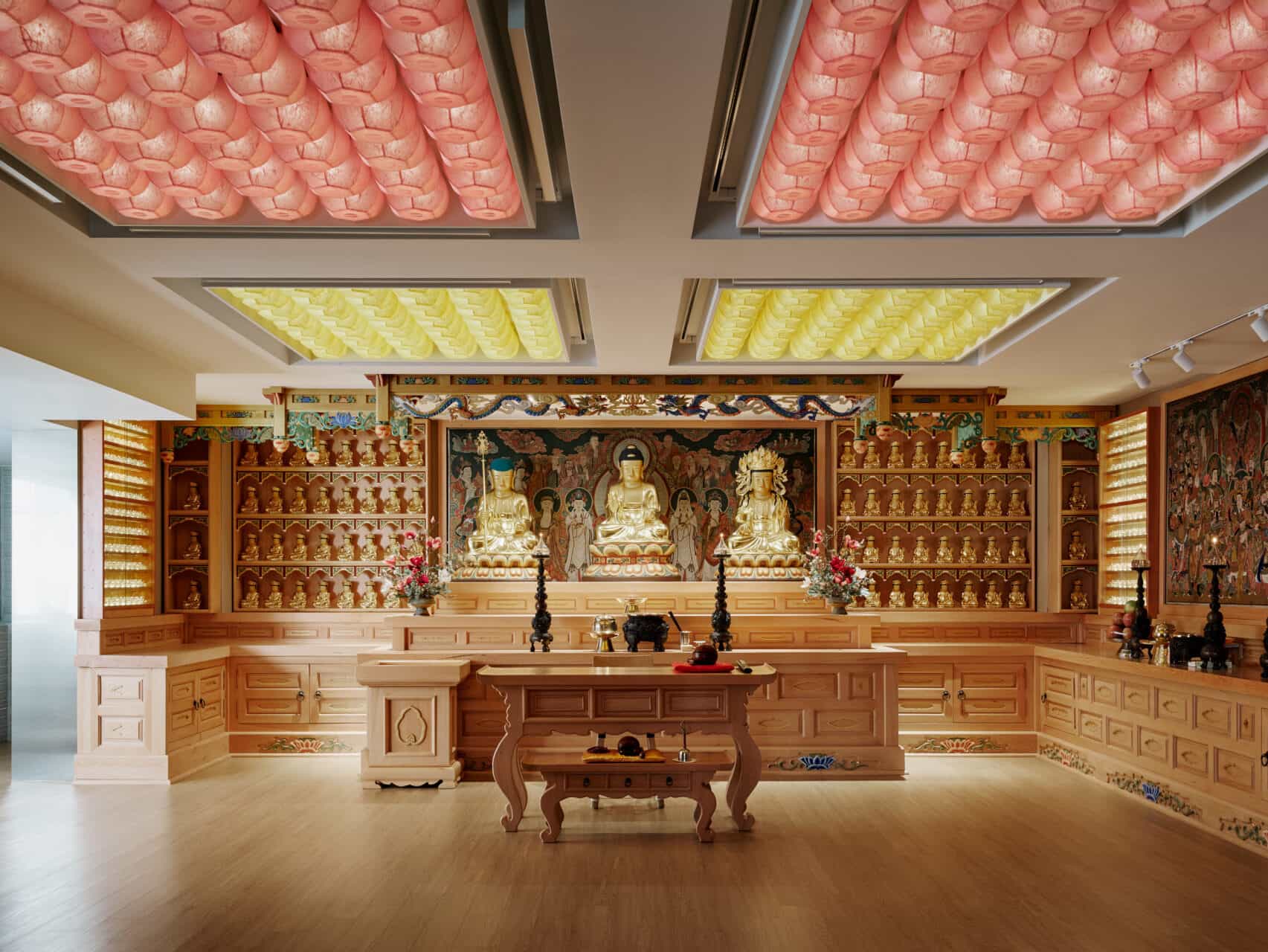In the bustling port city of Busan, South Korea, a modern interpretation of traditional Buddhist architecture is attracting urban dwellers seeking spiritual solace. The Bohyeon Seonwon, once nestled in the tranquil mountains of Gyeongju, has been relocated to the city’s heart, blending age-old design with contemporary aesthetics. The project, spearheaded by Design by 83, reimagines the essence of a Buddhist temple for a new generation, without losing touch with its roots.

PROJECT OVERVIEW
Location: 14 Seokpo-ro 26beonga-gil, Nam-gu, Busan, South Korea
Architecture & Interior Design: Design by 83
Construction: Sejong Construction Development Inc.
Master Carpenter: Practiced in Korean Hanok Architecture
The relocation of Bohyeon Seonwon was initiated by two dedicated nuns who envisioned a temple more accessible to both current followers and potential newcomers. Moving from the remote mountains to the vibrant cityscape of Busan was a bold step, one that necessitated a fresh design approach while retaining the spiritual core of the original temple. Design by 83 embraced this challenge, crafting a space that resonates with the serenity of traditional Buddhist architecture while appealing to the urban sensibilities of modern worshippers.

At first glance, the temple’s exterior exudes a sense of quiet monumentality, a fitting presence amidst the city’s dynamic backdrop. The design pays homage to traditional Korean and East Asian wooden architecture but swaps out timber for durable monolithic tiles and granite. These materials give the temple a solid, enduring appearance, while metal door and window features introduce a contemporary edge, bridging the gap between the old and the new.

Inside, the temple spans three above-ground levels and one underground. Each space serves a distinct purpose, yet all are united by a minimalist aesthetic that draws from, but does not replicate, traditional design. The underground level houses a dining hall for the nuns, where sleek tiles meet warm timber, creating a serene environment for communal meals. Moving upwards, the first above-ground floor is dedicated to an administrative office that continues the theme of contrast, with the centerpiece being a circular wall opening framing a Buddha statue—a subtle yet powerful nod to the spiritual core of the building.

The main hall, located on the second floor, is where the temple’s design truly shines. A master carpenter, skilled in Korean Hanok architecture, was brought in to ensure that this space remained true to its traditional roots while embracing modern touches. The hall is adorned with an altar for Buddha, surrounded by furniture and t’aenghwa—hanging paintings that are deeply symbolic in Korean Buddhism. Above, detachable prayer lanterns are encased in metal-framed ceiling panels, which can be backlit, adding a soft, ethereal glow to the space. This careful integration of lighting and traditional elements creates a meditative atmosphere that encourages reflection and prayer.
In the adjacent area, a small space for refreshments is hidden behind traditional sliding doors, maintaining the hall’s seamless, uncluttered look when not in use. This thoughtful design choice highlights the temple’s dual function as both a place of worship and a community gathering space.

Bohyeon Seonwon’s design reflects a growing trend among religious institutions: the desire to create spaces that are not only spiritually fulfilling but also attuned to the needs of contemporary worshippers. This is in line with the philosophy of Marek Jan Štěpán, a Czech architect who, in 2020, advocated for a more minimalist approach to religious architecture. Štěpán’s belief that a church—or temple—should be a space for contemplation, stripped of unnecessary elements, resonates deeply with the design of Bohyeon Seonwon.
This modern meditation centre in Busan successfully marries tradition with innovation, offering a space that is both timeless and timely. For those who enter, the temple is not just a place of worship, but a sanctuary that speaks to the past while embracing the present—a true reflection of the evolving landscape of religious architecture.




